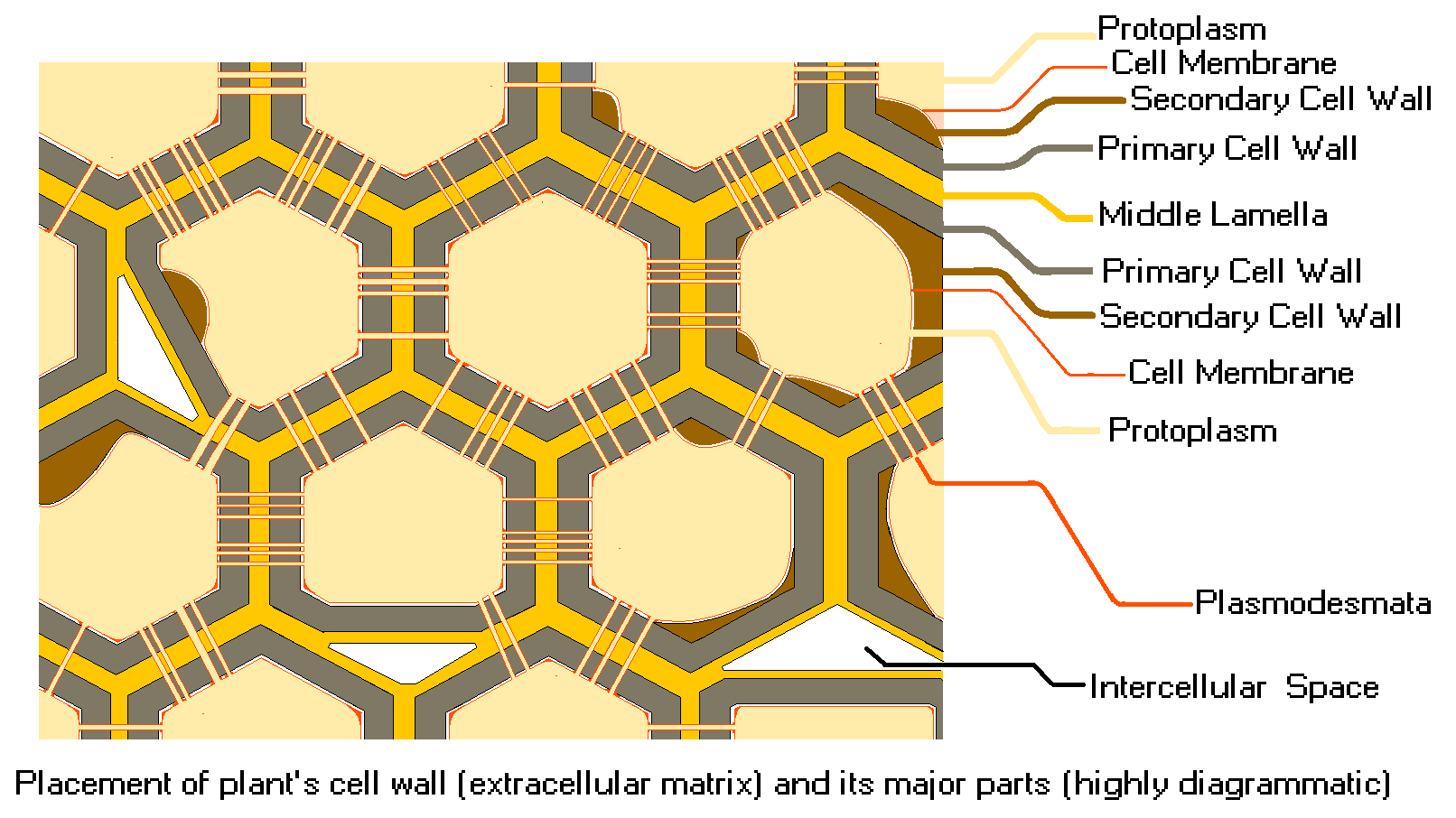
Different layers of cell wall are
(A) Middle lamella and primary wall
(B) Primary wall and secondary wall
(C) Middle lamella, primary wall and secondary wall
(D) Wall layers exclude middle lamella
Answer
490.8k+ views
Hint: The cell wall is the membrane that covers the cell. It is either flexible or rigid. It acts as the filtering membrane to the cell. This also helps in providing the structural support and the protection to all the organelles present in the cell.
Complete Answer:
The cell wall is present only in the plant cell but they are absent in the animals. This cell also helps in maintaining the size and shape of the cell by preventing the cell from becoming over bulged when more and more water enters into the cell. The cell wall varies differently for the different species.

This wall is generally arranged in three layers.
(1) Primary cell wall:
It is the first formed cell layer and present close to the cell. These are thinner when compared to the others and are made of the cellulose, pectin polysaccharides and some proteins. These are permeable and are flexible in nature.
(2) Middle lamella:
It is the outermost layer of the cell wall and it is made up of pectin, lignin and some other proteins.
(3) Secondary cell wall:
Once the primary cell wall is completely grown, this wall grows inside the primary cell wall. This layer is also thickest in nature.
Thus, the option (C) is correct.
Note: In the plants, the cells in the xylem have the secondary cell wall which is made up of the cellulose and lignin. This is because the xylem transmits water from the roots to the leaves and hence this substance provides the rigidity and the waterproofing to the cells in the xylem.
Complete Answer:
The cell wall is present only in the plant cell but they are absent in the animals. This cell also helps in maintaining the size and shape of the cell by preventing the cell from becoming over bulged when more and more water enters into the cell. The cell wall varies differently for the different species.

This wall is generally arranged in three layers.
(1) Primary cell wall:
It is the first formed cell layer and present close to the cell. These are thinner when compared to the others and are made of the cellulose, pectin polysaccharides and some proteins. These are permeable and are flexible in nature.
(2) Middle lamella:
It is the outermost layer of the cell wall and it is made up of pectin, lignin and some other proteins.
(3) Secondary cell wall:
Once the primary cell wall is completely grown, this wall grows inside the primary cell wall. This layer is also thickest in nature.
Thus, the option (C) is correct.
Note: In the plants, the cells in the xylem have the secondary cell wall which is made up of the cellulose and lignin. This is because the xylem transmits water from the roots to the leaves and hence this substance provides the rigidity and the waterproofing to the cells in the xylem.
Recently Updated Pages
Master Class 10 General Knowledge: Engaging Questions & Answers for Success

Master Class 10 Computer Science: Engaging Questions & Answers for Success

Master Class 10 Science: Engaging Questions & Answers for Success

Master Class 10 Social Science: Engaging Questions & Answers for Success

Master Class 10 Maths: Engaging Questions & Answers for Success

Master Class 10 English: Engaging Questions & Answers for Success

Trending doubts
A boat goes 24 km upstream and 28 km downstream in class 10 maths CBSE

Why is there a time difference of about 5 hours between class 10 social science CBSE

The British separated Burma Myanmar from India in 1935 class 10 social science CBSE

The Equation xxx + 2 is Satisfied when x is Equal to Class 10 Maths

Chandigarh is the capital of A Punjab B Haryana C Punjab class 10 social science CBSE

Change the following sentences into negative and interrogative class 10 english CBSE




